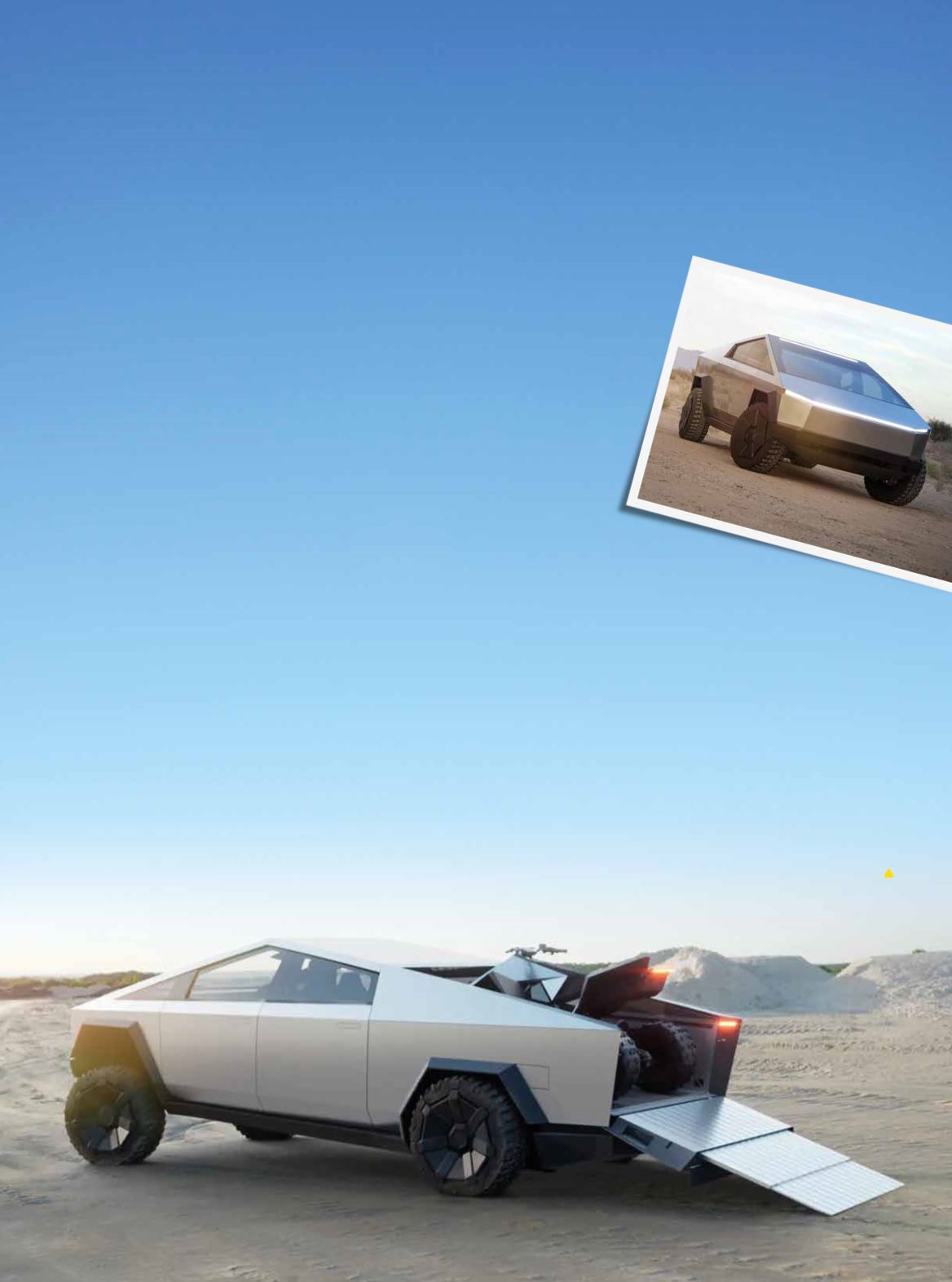

I
t’s rare that a commercial vehicle
will get car enthusiasts whipped
up into a frenzy, but the Tesla
Cybertruck has been doing exactly
that since it was first revealed to the
world back in 2019.
Since then, the hype train has run
out of puff. A production-ready version
of the concept that was revealed in
2019 has yet to eventuate, and issues
ranging from production difficulties
at Tesla’s US facilities to interruption
from the global pandemic have all been
cited as reasons why the Cybertruck
has been delayed. Production was
originally slated to begin in late 2021,
but here in 2022 there’s no production
timeline in sight – Tesla has simply
stopped making promises around the
Cybertruck’s introduction.
But worse still, it’s emerged that
Tesla may not even sell the Cybertruck
in Australia, with the vehicle’s size (it’s
expected to be a full-size pick-up in the
same vein as a Ford F-150 or Chevrolet
Silverado), safety concerns around
the Cybertruck’s hard-edged styling
and extreme demand in the USA
cited as reasons why the Australian
market – and basically every other
market outside North America - won’t
get a look-in. For those Australians
who’ve already put a deposit down
(Tesla opened the reservation book
immediately after the Cybertruck
concept’s 2019 reveal, and it’s still
open at time of publishing), that’s a bit
of a problem.
A solution may be just around the
corner though. Reports indicate that
Tesla is considering a second pickup/
utility model, one that will be smaller
than the Cybertruck and thus more
suitable for markets like South
America, Europe, South-East Asia and
Australia. Sized similarly to the Toyota
Hilux and Ford Ranger – both of which
were Australia’s top-two highest-
selling vehicles in 2021 – a smaller
Cybertruck derivative would likely be a
better seller in markets like ours than
the full-size original anyway.
And that would be in line with Tesla’s
experience with their passenger
cars, with the mid-size Model 3 sedan
outstripping the sales of the large-
sized Model S sedan in Australia by a
considerable margin.
But would a purely-electric utility
make sense for the Australian market?
That’s up to the market to decide, but
the market may have already spoken.
Sales of the Renault Zoe, Australia’s
first purely commercial electric vehicle
TESLA CYBERTRUCK MIGHT
NOT COME TO AUSTRALIA –
BUT ITS BROTHER MIGHT
(albeit a fairly small one both in size
and range), have not revealed a great
desire for battery-electric vehicles in
the commercial sector, and concerns
about ease of charging, usable range
and over-capitalisation are often cited
as reasons why business owners are
reluctant to make the switch.
Yet, the tide is changing. The Rivian
electric ute is on its way to Australia,
and a wave of diesel-electric hybrid
utes from Toyota, Ford and others
are also expected to surface in the
not too distant future. Whether the
commercial sector is ready or not,
electrification is certainly on its way.
















